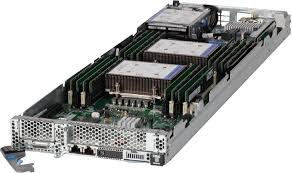Supercomputing In Plain English
THIS SITE IS DEPRECATED
We have transitioned to another service and are no longer actively updating this site.
Refer to our new documentation at: hpcdocs.hpc.arizona.edu
Why should I use one?
There are lots of reasons to use a supercomputer! For example, say you have analyses that require a tremendous amount of memory or storage space. It's not feasible (or very expensive) to use 3TB of memory or 10TB of disk space on a local workstation, but on our systems it's very possible (and free). This is how you scale up from the workstation under your desk.
Another possibility is you may have thousands of simulations to do. This may take an unreasonable amount of time and be a serious bottleneck for your research if you're running them in serial locally. However, on a supercomputer you can run hundreds of jobs at the same time using thousands of CPUs. This means you may wind up getting results in hours instead of months. This how you scale out your work.
You may also have experience with being frustrated with a job's runtime. What happens if it takes a week or longer to complete one of your analyses? On a local workstation, keeping your computer awake for the duration of the run may be difficult, inconvenient, or impossible. On a supercomputer, the process of running jobs can be fully automated. Once you have a special script written with all the necessary instructions, you can submit it to the scheduler and it does the rest. This means you can log out and close your computer without any worry about interrupting your work. Your results are returned to you as a text file in your account in real time so you can always log in and check your progress. You can even request email notifications to keep track of your job's status, though you'll want to be careful not to mail bomb yourself if you're running thousands of jobs.
How do I access a supercomputer?
Though you're physically distant from the UArizona supercomputers, you can access them directly from the comfort of your own local workstation. This can either be done from a local terminal (for Windows users, using something like PuTTY) or by using our web interface. To begin the process, you'll first need to request an account.
Where do I store my files?
Every compute node in our supercomputers is connected to a large storage array. This storage array is where any files you upload to the system are saved and means that no matter where you are on the system, you'll be able to access your data. There are three locations where your files may go, each with a different size limit. Take a look at our storage page for more detailed information.
What about software?
We provide hundreds of software packages as modules. These can be loaded using special module commands.
Are there any resources available to help me get started?
Absolutely. We have a quick start tutorial that can help walk you through the specifics of logging in and submitting a job for the first time. We have an Intro to HPC workshop video recording that goes over the basics of supercomputers and how to use them. We also have consultants available to provide support. They can be reached either via a ServiceNow ticket or by dropping by our virtual office hours held every Wednesday from 2:00-4:00pm. Click here for information on user support.
